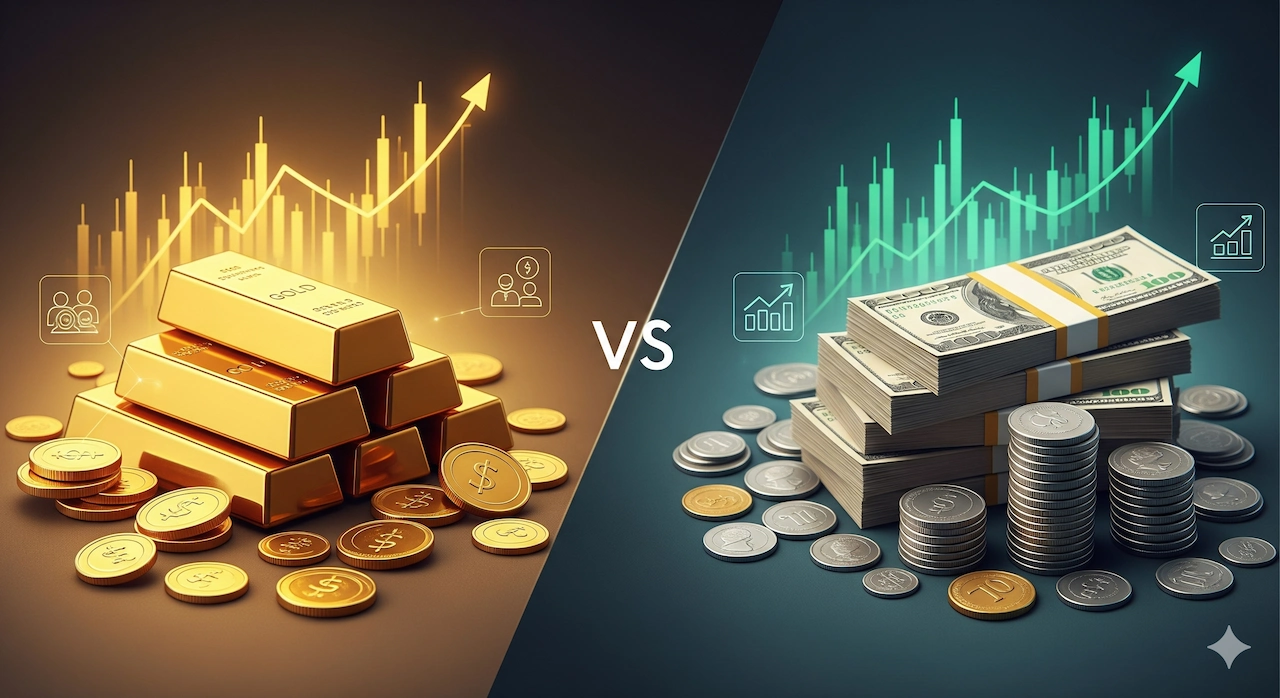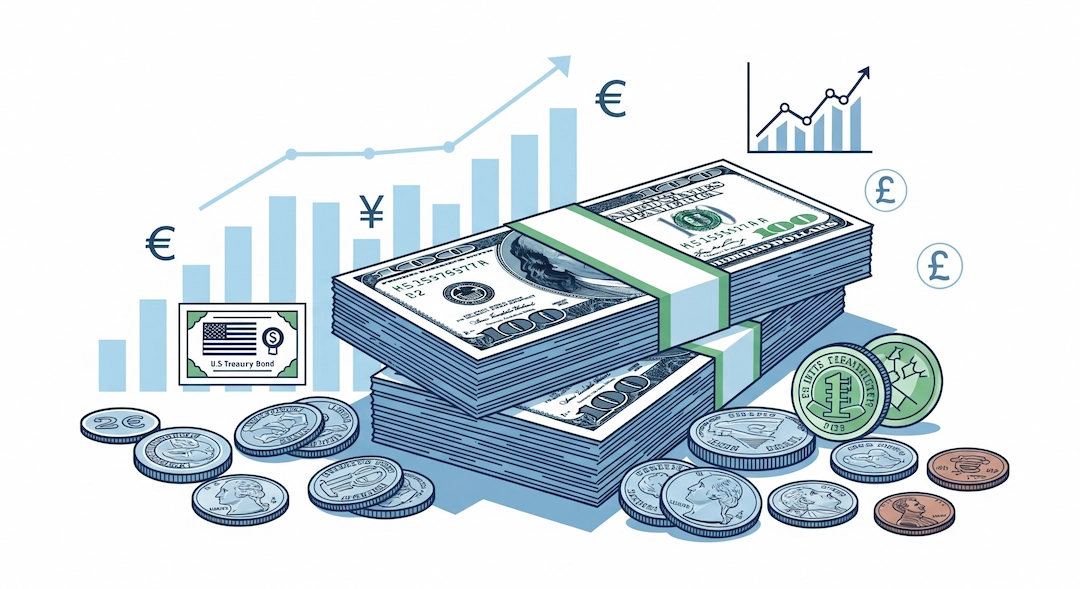GloNews10

In the realm of long-term investments, two assets consistently draw attention: gold vs US dollar. Both have historically served as pillars of financial stability, but each offers unique advantages and risks. As economic uncertainties rise and global financial markets evolve, understanding the dynamics of these two investment options is crucial for anyone seeking to preserve and grow wealth.
Gold has been revered for centuries as a store of value, a symbol of wealth, and a hedge against economic uncertainty. Its appeal is largely psychological—people trust gold because it has intrinsic value that transcends currency fluctuations. Unlike paper money, gold cannot be printed at will, which makes it resistant to inflationary pressures.
Historically, gold has demonstrated remarkable resilience during periods of economic crisis. For instance, during the 2008 global financial crisis, gold prices surged as investors sought a safe haven from collapsing stock markets and falling currencies. Similarly, geopolitical tensions, trade wars, and central bank policies have repeatedly driven demand for gold, reinforcing its status as a long-term store of value.
For more on gold investment trends, visit Investopedia: Gold as an Investment.

The US dollar, on the other hand, is the world’s primary reserve currency, widely accepted in global trade and financial transactions. It forms the backbone of many investment portfolios through cash holdings, US Treasury securities, and dollar-denominated assets.
The US dollar has generally maintained stability over long periods, supported by the economic strength and political stability of the United States. During periods of global uncertainty, the dollar often strengthens as investors flock to dollar-denominated assets for safety. For instance, during the COVID-19 pandemic, the dollar index (DXY) initially spiked as a safe haven before stabilizing as central banks intervened with monetary stimulus.
For updates on the US Dollar and global finance, see Federal Reserve: Monetary Policy.

Gold is often seen as superior to the dollar for inflation protection. When inflation rises, the purchasing power of cash declines, but gold tends to retain or even increase its value. For example, during the 1970s stagflation in the United States, gold prices skyrocketed while the dollar’s value plummeted.
The US dollar, backed by the world’s largest economy, offers unmatched liquidity and stability. Investors can easily convert dollars into a variety of assets or currencies. In contrast, while gold is liquid, it may take time to sell physical bullion at market value, and transaction costs can reduce returns.
Dollar-based investments, such as Treasury bonds and savings accounts, provide predictable income streams. Gold, by contrast, does not generate dividends or interest, relying solely on capital appreciation for returns.
Both assets play important roles in portfolio diversification. Gold often moves inversely to stocks and currencies, providing a hedge against market downturns. The US dollar, while less of a hedge, adds stability and liquidity, which can help balance a portfolio during volatile periods.
Over the past 50 years, gold has generally outperformed the US dollar in terms of long-term value preservation. Adjusted for inflation, an ounce of gold purchased in the 1970s is worth significantly more today, while the purchasing power of the dollar has steadily declined. However, the dollar has provided consistent liquidity, income opportunities, and the ability to invest in other appreciating assets.
These examples underscore that gold often outperforms the dollar during periods of high inflation or economic uncertainty, while the dollar excels in stability and liquidity during normal or deflationary periods.
Most financial advisors recommend a diversified approach. A portfolio combining gold and dollar-denominated assets can provide both growth and stability. Typically, long-term investors allocate a small portion (5–15%) of their portfolio to gold, while maintaining core investments in dollar assets, stocks, and bonds.
For gold, dollar-cost averaging—investing a fixed amount regularly—can mitigate volatility risks. For the US dollar, holding a mix of cash and dollar-denominated bonds ensures liquidity and steady returns.
Several factors will shape the long-term performance of gold and the US dollar:
Economists and financial analysts often suggest that neither asset is inherently “better” for all investors. According to some experts:
Ultimately, the choice depends on investment goals, risk tolerance, and time horizon.
For long-term investors, both gold and the US dollar offer unique advantages. Gold excels in preserving wealth during periods of inflation and uncertainty, while the US dollar provides stability, liquidity, and income potential. A balanced investment strategy that incorporates both can help investors achieve a resilient and diversified portfolio.
While past performance does not guarantee future results, history suggests that holding a combination of gold and dollar-denominated assets provides the best hedge against economic uncertainty and market volatility. Investors who carefully assess their goals and adopt a disciplined strategy are likely to benefit from the strengths of both investment options.
In an unpredictable global economy, the debate between gold and the US dollar is unlikely to end. However, informed investors can use the complementary qualities of both to secure long-term financial growth and stability.